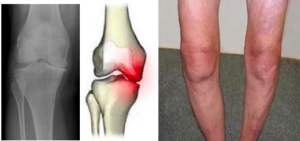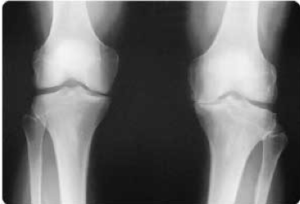
Osteoarthritis (OA) is a degenerative joint disease resulting from the breakdown of joint cartilage and underlying bone. The most common symptoms are joint pain and stiffness, which usually progress slowly over the years. Initially, they may occur only after exercise but can become constant over time. It is the most common form of arthritis, affecting more than 32.5 million adults in the United States alone.
OA can affect any joint but typically affects hands, knees, hips, lower back and neck and generally affects individuals older than fifty. However, with the prevalence of sport in society, OA can affect younger individuals too, especially when they succumb to injuries like torn ACL or PCL in the knee or meniscal tears. It generally develops slowly, but the onset can be relatively rapid if associated injuries are present in the joints.
 There is no cure for OA, and prevention is always better than the cure, but there are ways to manage OA to minimize pain, continue physical activities, maintain a good quality of life and remain mobile.
There is no cure for OA, and prevention is always better than the cure, but there are ways to manage OA to minimize pain, continue physical activities, maintain a good quality of life and remain mobile.
Factors that may contribute to the onset of Osteoarthritis (OA) include:
- Age over 50
- A joint injury like torn ACL or PCL of the knee
- Overuse injuries like long-distance runners
- Obesity increases pressure on joints, and fat cells promote inflammation.
- Weak muscles surrounding the joints offer less support to underlying structures
- It affects both genders but is more common in females
- Genetic predisposition
- Musculoskeletal issues such as skeletal misalignment can contribute to early-onset OA.
- Environmental/ Modifiable Factors such as occupation, sport, diet, bone strength
How can we diagnose OA?
- Patient History
- Pain in joints
- Swelling in joint after activities
- Limited range of motion
- Feeling that the common is unstable or wants to “give way.”
- Joint stiffness, especially in the mornings or in colder weather
- Clicking or snapping sounds when moving the joints
- X-rays, MRI, CT
- Blood tests
OA can affect many different areas of the body but one of the more debilitating areas is the knees as this can severely affect ones mobility and ability to enjoy life and do normal day to day tasks. Often, OA when left to progress can lead to extensive joint deterioration and leave no option other than surgery, eg: knee replacement. However, there is now a new form of treatment that can be an alternative to surgery where the OA is not yet at the end stage of severity.
Knee Osteoarthritis
Normal vs Arthritis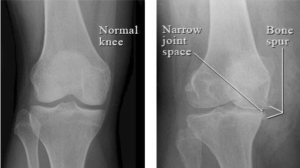
Severe Arthritis
How can we HELP you at Lusaka Chiropractic and Wellness Clinic?
Suppose you are over 50 and have experienced stiffness and pain in your joints, or you are a sportsman who has suffered some severe injuries. In that case, it may be worth your while presenting to the clinic and undergoing an exam so we can make a formal diagnosis and get you treatment ASAP. We can guarantee that OA will not fix itself, and early treatment may prevent the inevitable surgery from happening.
Knee Replacement Surgery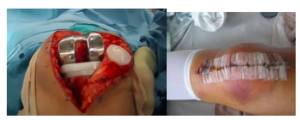
A new treatment alternative for OA is Unloader Bracing
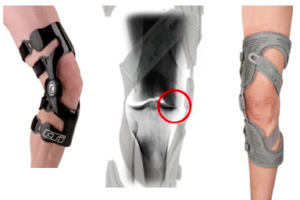 Research has shown that we can stagnate the progression and almost reverse the effects of OA on the knee. A patient can choose to have a fitment of an UNLOADER Knee brace and then inject Stem Cells, Hyaluronic Acid (HA), Synvisc One or PRP injections into the joint space, by an Orthopaedic Surgeon, after the fitment of the braces.
Research has shown that we can stagnate the progression and almost reverse the effects of OA on the knee. A patient can choose to have a fitment of an UNLOADER Knee brace and then inject Stem Cells, Hyaluronic Acid (HA), Synvisc One or PRP injections into the joint space, by an Orthopaedic Surgeon, after the fitment of the braces.
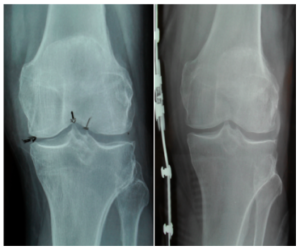 XRay on the left shows grade 2 OA of the medial compartment of the knee before bracing, and the X-ray on the right is the same patient with the UNLOADER knee brace.
XRay on the left shows grade 2 OA of the medial compartment of the knee before bracing, and the X-ray on the right is the same patient with the UNLOADER knee brace.
How do the braces work?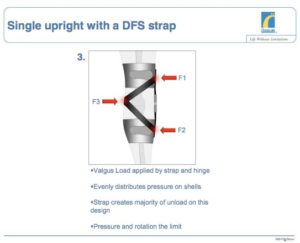 Conclusion
Conclusion
Unloading knee braces decreased pain, improved function, and patients reported increased quality of life during the study time. An UNLOADER brace is a treatment alternative in moderate to severe unicompartmental knee OA
With over 20 Studies worldwide, and over 19 million USD spent on research alone in 2009, the Unloader One is the most researched unloader brace in the world. The Custom Brace has a lifetime guarantee.
So what is the protocol for a patient?
- Make an appointment and get a formal diagnosis.
- Address any musculoskeletal imbalances that might exist that might be contributing or causative factors to the development of the OA.
- If you have moderate OA (grade 2), we can proceed to fit the UNLOADER brace.
- Getting a custom knee brace may be necessary if you have a severe genu varus or genu valgus deformity due to the OA. For this, we take measurements and photos and order the braces directly from the manufacturer, which can take longer to process than an OTS brace.
- During this period, we start Shockwave therapy to reduce the painful bone spurs and heal damaged cartilage. 1/week for five weeks.
- Chiropractic care might be implemented to address any imbalances and improve skeletal and muscular function.
 EST Extracorporeal Shockwave Therapy
EST Extracorporeal Shockwave Therapy
- Our qualified Physiotherapists will start a muscle strengthening program ASAP 2/week for 12 weeks.
- An assessment for orthotic support to stabilize your feet might be recommended.
Rehabilitation
Why suffer when you can live a life without limitations? Book an appointment today!!
Author: Dr Ron van As (Chiropractor)

